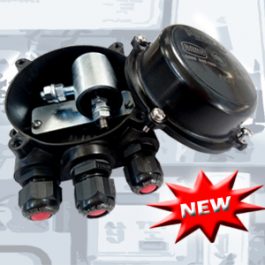Description
Voltage Limiting device (VLD)
Voltage Limiting device conducts once a predetermined voltage has been attained, once conducting they maintain the predetermined volt drop across the device.
The voltage clamping devices will “ soft turn on” as the threshold approaches and have a partial turn on bleeding more and more current off of the pipeline.
Once a predetermined threshold is reached, the voltage will be clamped whilst the conduction will be at a maximum.
The Voltage clamping devices comply with NFP 70 & Eskom guidelines as they do not ”Short Circuit”. Both the current as well as the voltage are off of the pipeline.
These types of devices can have AC Mitigation circuits in parallel to decouple AC steady state interference from overhead powerlines on the pipe to cater for AC voltage below the Cathodic Protection DC fault threshold level.
Once “on” current flowing through the device will not keep the device conducting if the voltage falls below the predetermined threshold.
Disadvantages of Voltage clamping devices are heat generation (ignition temperatures in Hazardous zones) and relative physical size whilst they fully comply with NFP 70 and Eskom guidelines.
Typical discharge currents are;
- 1,2kA,
- 3,7kA,
- 5kA
- 14kA
Voltage Limiting device (VLD) – DC Transient protection and voltage limiting device for test posts, ground mats, earth spikes and rebar connections.
Specification:
- 130 AC V RMS, 170 DC V, 40kA Current Peak IP65 enclosure
- 75 AC V RMS, 100 DC V, 40kA Current Peak in IP65 enclosure


